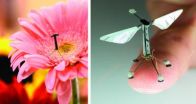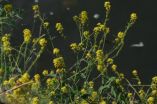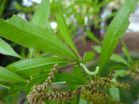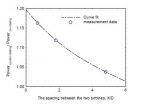(Press-News.org) Researchers have been taking tips from nature to build the next generation of flying robots.
Based on the mechanisms adopted by birds, bats, insects and snakes, 14 distinguished research teams have developed solutions to some of the common problems that drones could be faced with when navigating through an urban environment and performing novel tasks for the benefit of society.
Whether this is avoiding obstacles, picking up and delivering items or improving the take-off and landing on tricky surfaces, it is hoped the solutions can lead to the deployment of drones in complex urban environments in a number of different ways, from military surveillance and search and rescue efforts to flying camera phones and reliable courier services. For this, drones need exquisite flight control.
The research teams have presented their work today, 23 May, in a special issue of IOP Publishing's journal Bioinspiration and Biomimetics, devoted to bio-inspired flight control.
The first small drones have already been used in search and rescue operations to investigate difficult-to-reach and hazardous areas, such as in Fukushima, Japan. A research team from Hungary believe these efforts could be improved if robots are able to work in tandem, and have developed an algorithm that allows a number of drones to fly together like a flock of birds.
The effectiveness of the algorithm was demonstrated by using it to direct the movements of a flock of nine individual quadcopters whilst they followed a moving car.
While this collective movement may be helpful when searching vast expanses of land, a group of researchers from Harvard University have developed a millimetre-sized drone with a view to using it to explore extremely cramped and tight spaces.
The microrobot they designed, which was the size of a one cent coin, could take off and land and hover in the air for sustained periods of time. In their new paper, the researchers have demonstrated the first simple, fly-like manoeuvres. In the future, millimetre-sized drones could also be used in assisted agriculture pollination and reconnaissance, and could aid future studies of insect flight.
Once deployed into the real world, drones will be faced with the extremely tricky task of dealing with the elements, which could be extreme heat, the freezing cold, torrential rain or thunderstorms.
The most challenging problem for airborne robots will be strong winds and whirlwinds, which a research team, from the University of North Caroline at Chapel Hill, University of California and The Johns Hopkins University, have begun to tackle by studying the hawk moth.
In their study, the researchers flew hawk moths through a number of different whirlwind conditions in a vortex chamber, carefully examining the mechanisms that the hawk moths used to successfully regain flight control.
Researchers must also find a way of reducing the amount of power that is required to operate drones, which a team from the Université de Sherbrooke and Stanford University have achieved by creating a "jumpglider".
Inspired by vertebrates like the flying squirrel, the flying fish and the flying snake, which use their aerodynamic bodies to extend their jumping range to avoid predators, the "jumpglider" combines an aeroplane-shaped body with a spring-based mechanical foot that propels the robot into the air.
The researchers believe the "jumpglider" can be used in search and rescue efforts, operating at low power and offering a significant advantage over land-based robots by being able to navigate around obstacles and over rough terrain.
In his opening editorial, Guest Editor of the special issue, Dr David Lentink, from Stanford University, writes: "Flying animals can be found everywhere in our cities. From scavenging pigeons to alcohol-sniffing fruit flies that make precision landings on our wine glasses, these animals have quickly learnt how to control their flight through urban environments to exploit our resources.
"To enable our drones to fly equally well in wind and clutter, we need to solve several flight control challenges during all flight phases: take-off, cruising, and landing.
"This special issue provides a unique integration between biological studies of animals and bio-inspired engineering solutions. Each of the 14 papers presented in this special issue offer a unique perspective on bio-mimetic flight, providing insights and solutions to the take-off, obstacle avoidance, in-flight grasping, swarming, and landing capabilities that urban drones need to succeed."
INFORMATION:
From Thursday 23 May, the special issue can be downloaded for free from http://iopscience.iop.org/1748-3190/9/2
A full package of videos and images can be downloaded from here - https://www.dropbox.com/sh/ufb4nq9stvyqja3/AADfEPGFAPqpijugkMrKK1Zda
Notes to Editors
Contact
1. For further information, a full draft of the journal paper or contact with one of the researchers, contact:
Michael Bishop, IOP Press Officer, Tel: 0117 930 1032 email: michael.bishop@iop.org
For more information on how to use the embargoed material above, please refer to our embargo policy.
IOP Publishing Journalist Area
2. The IOP Publishing Journalist Area gives journalists access to embargoed press releases, advanced copies of papers, supplementary images and videos. In addition to this, a weekly news digest is uploaded into the Journalist Area every Friday, highlighting a selection of newsworthy papers set to be published in the following week. Login details also give free access to IOPscience, IOP Publishing's journal platform. To apply for a free subscription to this service, please email Michael Bishop, IOP Press Officer, michael.bishop@iop.org, with your name, organisation, address and a preferred username.
Bioinspiration and Biomimetics
3. Bioinspiration & Biomimetics publishes research which applies principles abstracted from natural systems to engineering and technological design and applications.
IOP Publishing
4. IOP Publishing provides a range of journals, magazines, websites and services that enable researchers and research organisations to reach the widest possible audience for their research. We combine the culture of a learned society with global reach and highly efficient and effective publishing systems and processes. With offices in the UK, US, Germany, China and Japan, and staff in many other locations including Mexico and Russia, we serve researchers in the physical and related sciences in all parts of the world. IOP Publishing is a wholly owned subsidiary of the Institute of Physics. The Institute is a leading scientific society promoting physics and bringing physicists together for the benefit of all. Any profits generated by IOP Publishing are used by the Institute to support science and scientists in both the developed and developing world. Go to ioppublishing.org.
Access to Research
5. Access to Research is an initiative through which the UK public can gain free, walk-in access to a wide range of academic articles and research at their local library. This article is freely available through this initiative. For more information, go to http://www.accesstoresearch.org.uk
The Institute of Physics
6. The Institute of Physics is a leading scientific society. We are a charitable organisation with a worldwide membership of more than 50,000, working together to advance physics education, research and application.
We engage with policymakers and the general public to develop awareness and understanding of the value of physics and, through IOP Publishing, we are world leaders in professional scientific communications.
In September 2013, we launched our first fundraising campaign. Our campaign, Opportunity Physics, offers you the chance to support the work that we do.
Nature inspires drones of the future
2014-05-23
ELSE PRESS RELEASES FROM THIS DATE:
Rapid evolution aids spread of exotic plant species
2014-05-23
A team of Belgian biologists led by researchers at KU Leuven has provided the first genetic evidence that rapid evolution can help non-native plant species spread in new environments. Using samples of centuries-old herbaria and DNA analysis, the researchers reconstructed the genetic adaptations undergone by the Pyrenean rocket prior to its rapid spread in Belgium.
The Pyrenean rocket (Sisymbrium austriacum subsp. chrysanthum) is a plant that grows in the mountains of southern Europe and is particularly prevalent in the Pyrenees. The species was first reported in Belgium ...
Lack of plant diversity spurs cankerworm damage in cities
2014-05-23
Research from North Carolina State University finds that a lack of plant diversity is a key contributor to the widespread defoliation caused by cankerworms in cities, and highlights the role that increasing diversity can play in limiting future damage.
Fall cankerworms (Alsophila pometaria) are caterpillars that are native to the eastern United States and hatch in early spring. The cankerworms defoliate trees and other plants, eating new leaves as they emerge – which is both unsightly and can ultimately kill the plants.
"We see cankerworms doing more damage to trees ...
Flatland optics with graphene
2014-05-23
Researchers from CIC nanoGUNE, in collaboration with ICFO and Graphenea, introduce a platform technology based on optical antennas for trapping and controlling light with the one-atom-thick material graphene. The experiments show that the dramatically squeezed graphene-guided light can be focused and bent, following the fundamental principles of conventional optics. The work, published yesterday in Science, opens new opportunities for smaller and faster photonic devices and circuits.
Optical circuits and devices could make signal processing and computing much faster. ...
Bacterial adaptation contributes to pneumococcal threat in sickle cell disease patients
2014-05-23
Researchers have identified differences in the genetic code of pneumococcal bacteria that may explain why it poses such a risk to children with sickle cell disease and why current vaccines don't provide better protection against the infection. St. Jude Children's Research Hospital scientists led the study, which appeared earlier this month in the journal Cell Host & Microbe.
The findings will aid efforts to improve vaccine effectiveness and inform research into new ways to protect young sickle cell disease patients from life-threatening pneumococcal infections that can ...
Breakthrough in RSV research to help infected children
2014-05-23
Researchers at Le Bonheur Children's Hospital and the University of Tennessee Health Science Center announced results today from a clinical trial of a drug shown to safely reduce the viral load and clinical illness of healthy adult volunteers intranasally infected with respiratory syncytial virus (RSV).
Detailed results of this study were presented by lead researcher Infectious Disease Specialist John DeVincenzo, MD, this week during a poster discussion session at the American Thoracic Society 2014 International Conference in San Diego. He serves as medical director of ...
Argonne scientists discover new phase in iron-based superconductors
2014-05-23
Scientists at the U.S. Department of Energy's Argonne National Laboratory have discovered a previously unknown phase in a class of superconductors called iron arsenides. This sheds light on a debate over the interactions between atoms and electrons that are responsible for their unusual superconductivity.
"This new magnetic phase, which has never been observed before, could have significant implications for our understanding of unconventional superconductivity," said Ray Osborn, an Argonne physicist and coauthor on the paper.
Scientists and engineers are fascinated ...
Health-care professionals must be aware of rarer causes of headaches in pregnancy
2014-05-23
Most headaches in pregnancy and the postnatal period are benign, but healthcare professionals must be alert to the rarer and more severe causes of headaches, suggests a new review published today (23 May) in The Obstetrician & Gynaecologist (TOG).
The review looks at common causes for headaches during pregnancy and the postnatal period, possible conditions that may be associated with headaches and how healthcare professionals should manage the care of the woman appropriately.
There are 85 different types of headache. Approximately 90% of headaches in pregnancy are migraine ...
A study assesses the possibility of turning CO2 into methanol for use in transport
2014-05-23
Tecnalia has collaborated in a study for the European Parliament's Science and Technology Options Assessment Panel (STOA) on the future use of methanol, produced from carbon dioxide, in motorised transport. STOA is the panel that advises MEPs in the sphere of Science and Technology.
The study analysed the barriers –technological, environmental and economic– to producing methanol using carbon dioxide as well as the options that would allow possible uses in automobile transport in the medium and long term.
The costs and benefits were evaluated from the life cycle perspective ...
New sensor could light the way forward in low-cost medical imaging
2014-05-23
New research published today in Nature's Scientific Reports, identifies a new type of light sensor that could allow medical and security imaging, via low cost cameras.
The team of researchers from the University of Surrey have developed a new 'multispectral' light sensor that detects the full spectrum of light, from ultra-violet (UV), to visible and near infrared light.
Indeed, near infrared light can be used to perform non-invasive medical procedures, such as measuring the oxygen level in tissue and detecting tumours. It is also already commonly used in security camera ...
A new concept to improve power production performance of wind turbines in a wind farm
2014-05-23
Wind energy is one of the most promising renewable energy resources in the world today. Dr. Hui Hu and his group at Iowa State University studied the effects of the relative rotation directions of two tandem wind turbines on the power production performance, the flow characteristics in the turbine wake flows, and the resultant wind loads acting on the turbines. The experimental study was performed in a large-scale Aerodynamics/Atmospheric Boundary Layer (AABL) Wind Tunnel available at Aerospace Engineering Department of Iowa State University. Their work, entitled "An experimental ...




